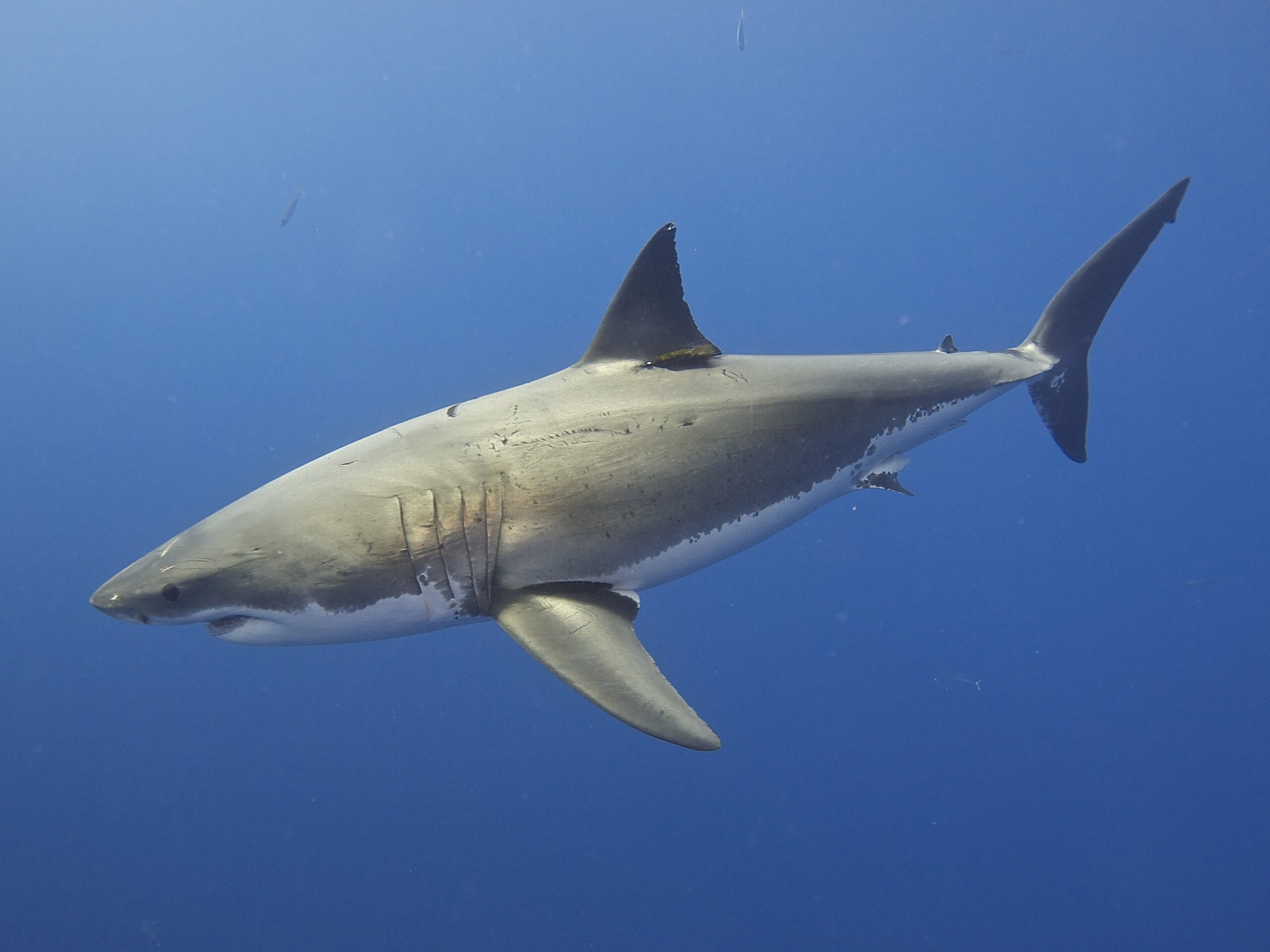The moment you hear the name shark, you imagine it to be a giant-sized fish, and this perception is often portrayed through shark movies. As sharks have been here in the world for thousands of years, they are naturally considered to be too big in size, so much so that they can easily swallow humans in a go.
Sharks certainly do have a large body length, but it isn’t true for all shark species. The number of shark species discovered to date exceeds 500? Yet the ocean world holds so many secrets waiting to be discovered.
However, before we step into the water, we must know how big a shark can get so that we have an idea of what may come next as we swim underwater.
How big can sharks grow?
As mentioned earlier, there is a wide range of shark species available, and thus they come in all sizes, shapes, and colors. The National History Museum has talked about the largest shark that existed long before, the Megalodon shark, which is believed to be reaching a size of more than 18 meters. Though the Megalodon doesn’t exist today, we have another shark known as the whale shark, which is said to be the largest among all shark species with an approximate size of 60 feet, almost the same as the Megalodon shark.
To put it in a closure, sharks can grow as large as sixty feet in size, and you will find as small species as smaller than your hand. So, it’s all about the species we are talking about, and the size will be different.
Whale sharks are the largest shark species with a maximum length of 60 feet, whereas spined pygmy sharks are the smallest species, measuring about 5 to 8 inches long when fully grown.
What are the biggest sharks?
Sharks are among the most captivating creatures you will ever see on earth. Every characteristic about them, from their size to how they swim, to their habitat, seems surprising the more you learn about them.
Since we are discussing the size aspect, let’s get to know what are some of the biggest shark species we have in the marine world.
The whale shark
As discussed above, the whale sharks take the top position with respect to size, as they can reach to be as big as 60 feet in length. However, despite their giant size body, their diet mainly consists of plankton, and they do not pose any threat to humans, nor are they considered aggressive. It is also one of the filter-feeding shark species. Can you imagine how much the whale sharks weigh?
Its long lifespan and late maturation are factors causing the IUCN to consider the species endangered, in addition to the impacts of fisheries, bycatch losses, and vessel strikes.
Find out more about why whale sharks are endangered.
The basking shark
With a body reaching an approximate length of 50 feet, basking sharks are said to be the second-largest species. It is also one of the filter feeder sharks and mainly likes to eat zooplankton. Despite their giant size, they are unlikely to attack humans and avoid confrontation.
Find more about basking sharks’ size and what they prefer to eat.
This species is also registered as endangered due to overfishing, mainly for commercial use.
Megamouth Shark
Another giant-sized shark that feeds on plankton, megamouth sharks, can reach an approximate length of 25 feet. Although they have gigantic mouths capable of swallowing the entire human body, these creatures are quite docile and very rare.
Great white shark
On average, an adult great white reaches an approximate length of 15 feet. However, a few of them reach more than 20 feet, making them one of the giant-sized sharks.
Great white sharks are apex predators due to the fact that they do not have any natural predators other than the orca, which sometimes attacks them. The great white is also one of the dangerous species and is likely to attack humans if ever confronted. Due to their predatory behavior and natural habitat, you will not see a great white in aquariums as they will die in captivity.
The tiger shark
There is also another species that is dangerous and has a large size, reaching a maximum length of about 24 feet. The tiger shark prefers to hunt solitary and mostly at night, eating whatever is available, and is one of the most adaptable sharks. In spite of the fact that they are apex predators, killer whales sometimes eat tiger sharks as prey. Get to know more about what are the predators of sharks?
How big do some other famous shark species get?
As said earlier, each and every species has different features, qualities, and characteristics, and they all come in varied sizes. While a few of the well-known shark lengths are discussed above, there are a lot many other famous species in the water world.
Discussing the Greenland sharks, they are said to reach a length of about 24 feet. Check out how long do Greenland sharks live?
Among many others, the hammerhead sharks are believed to obtain a size of around 20 feet, the nurse shark reaching 13 feet, and the mako sharks, 8 feet.
Find out here how big red tail shark, rainbow shark, and Bala shark can get?
Conclusion
Reading shark stories when we were children to learning about them as we grew into adults, sharks always astonish us with their unique and distinctive features and, most importantly, the size they can reach.
However, there is no exact size for them since they grow in varying lengths, with the largest species reaching about 60 feet and the smallest being about the size of your hand.







